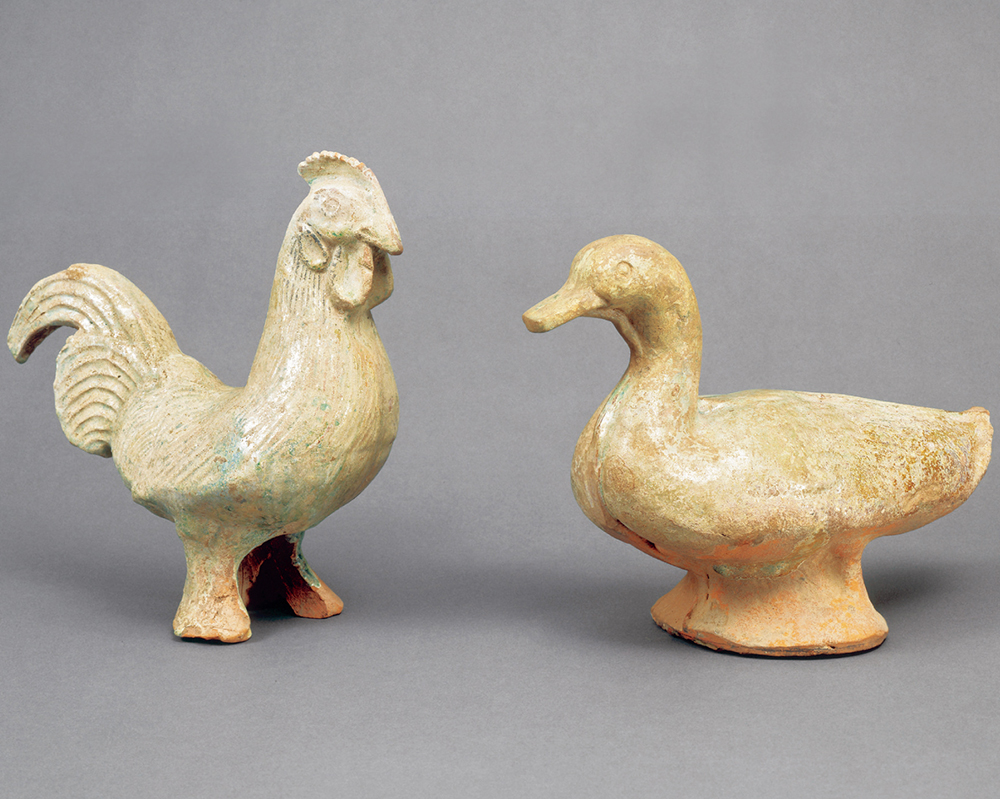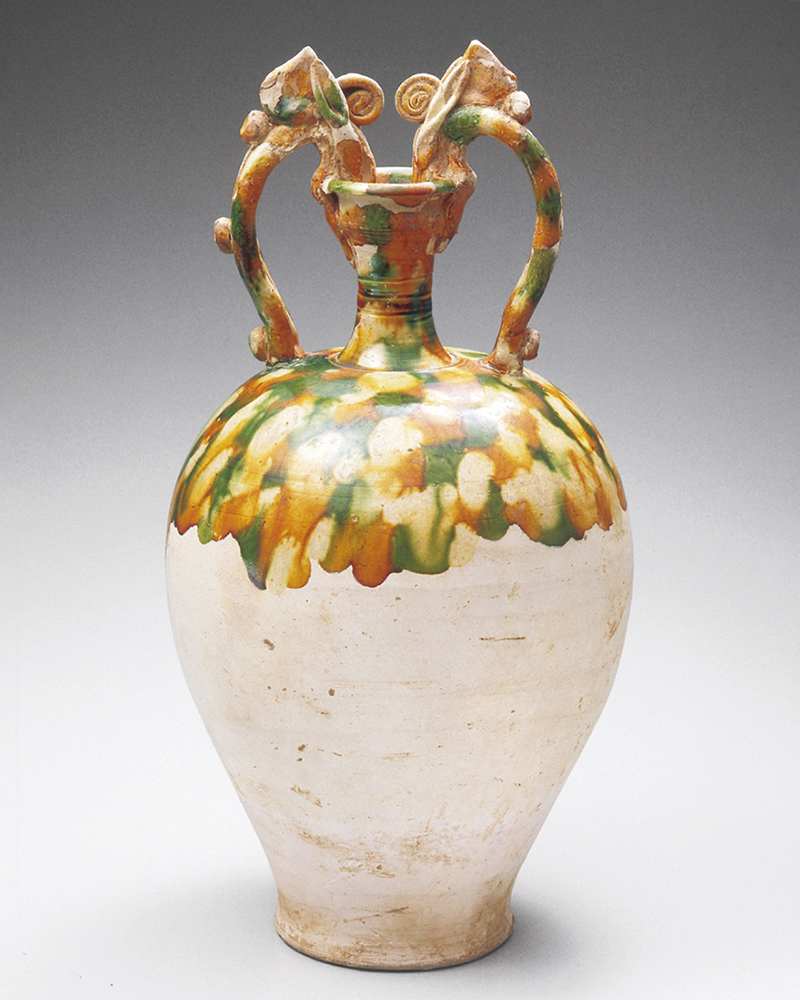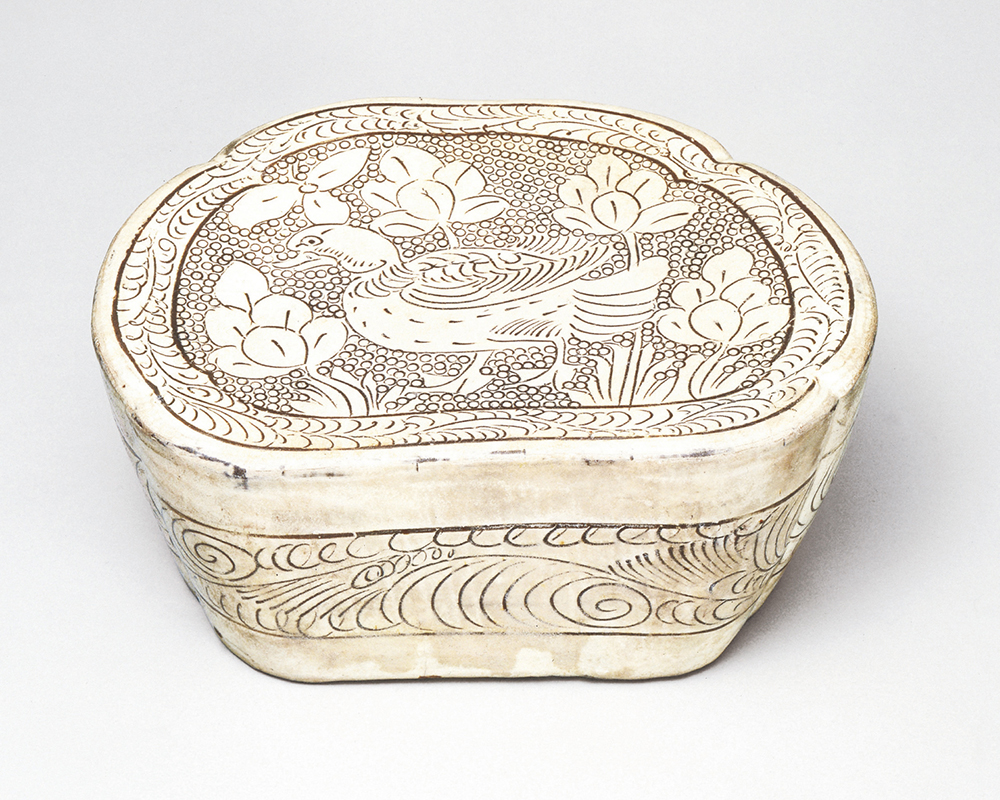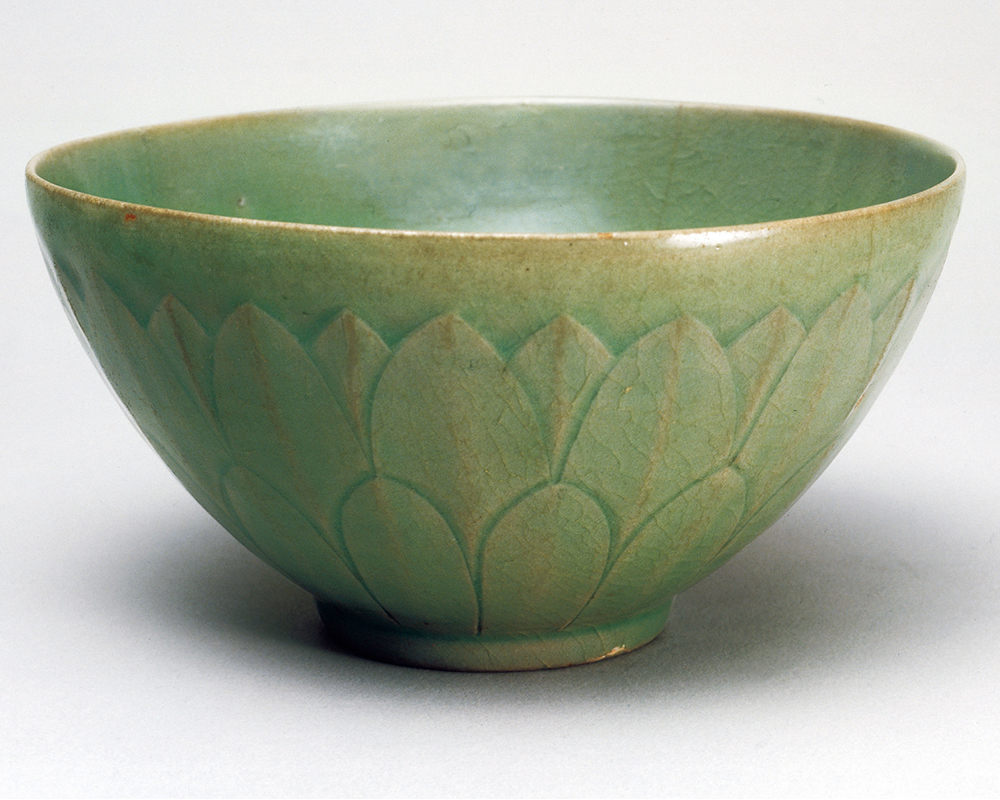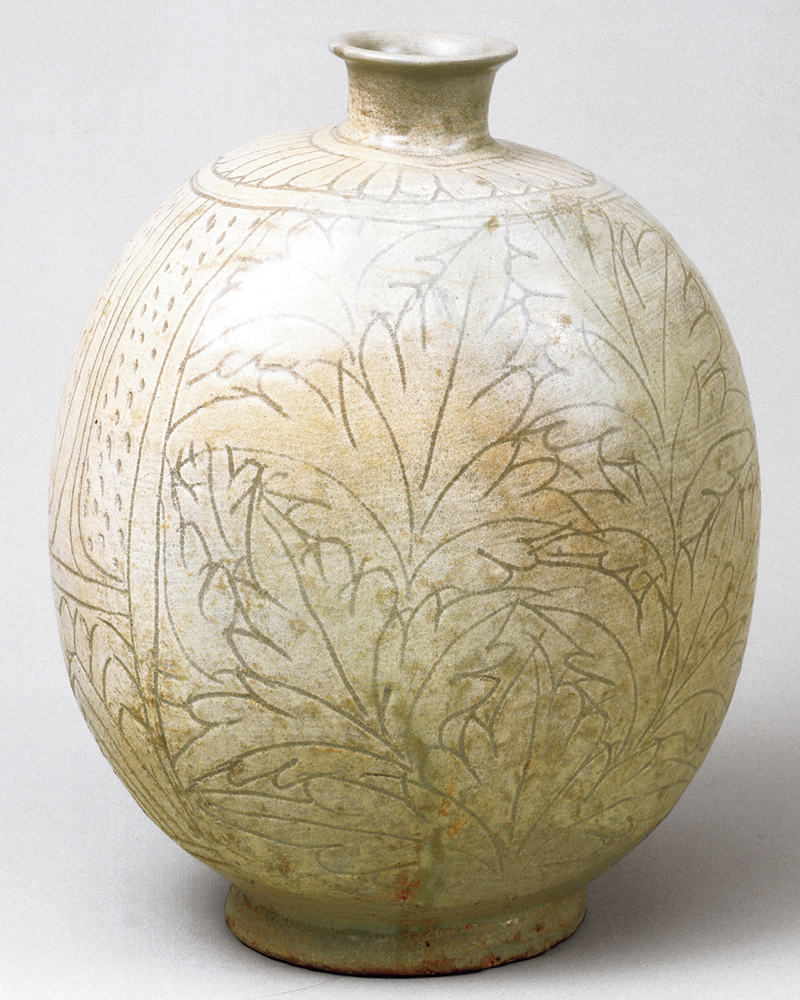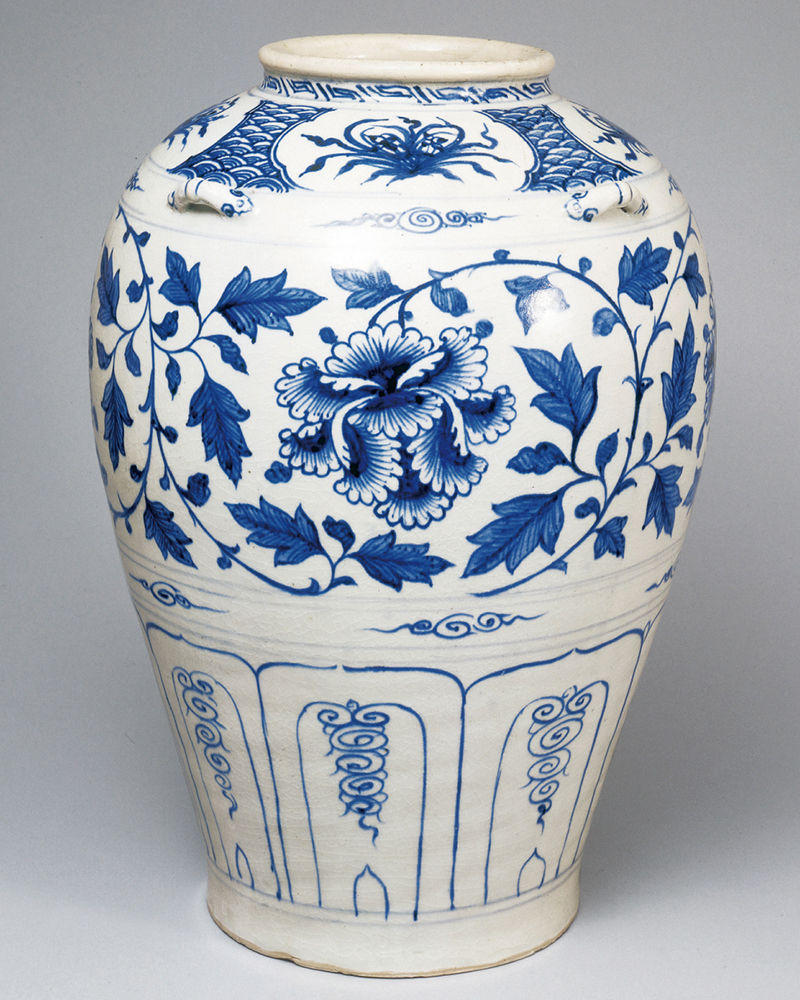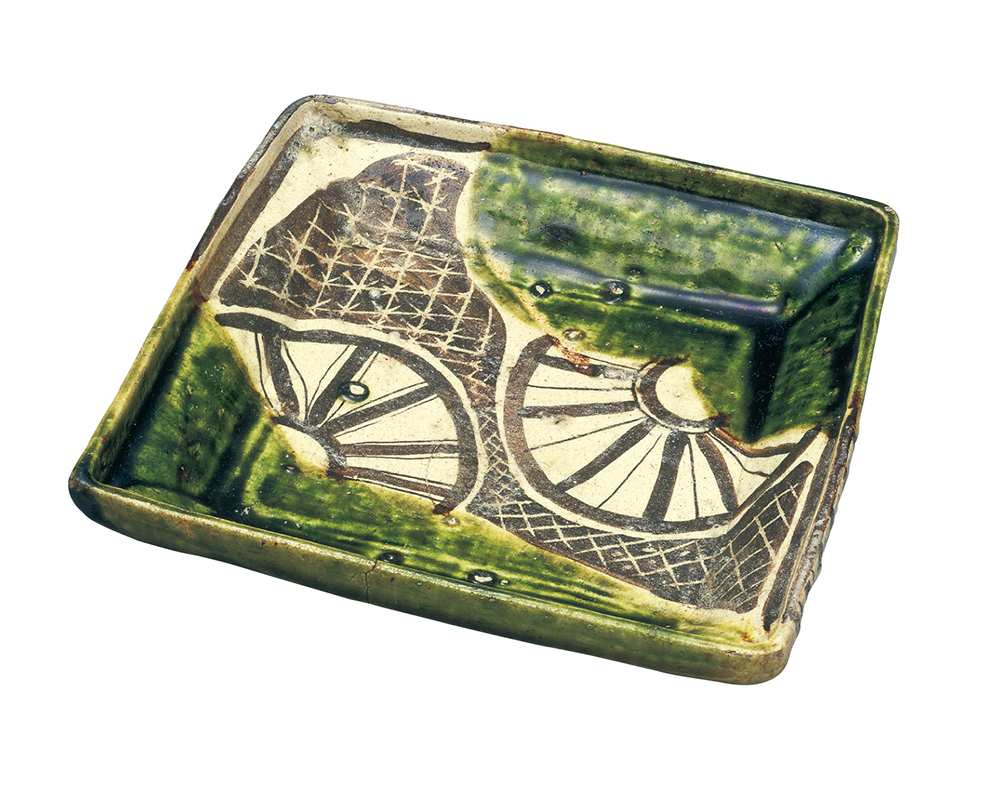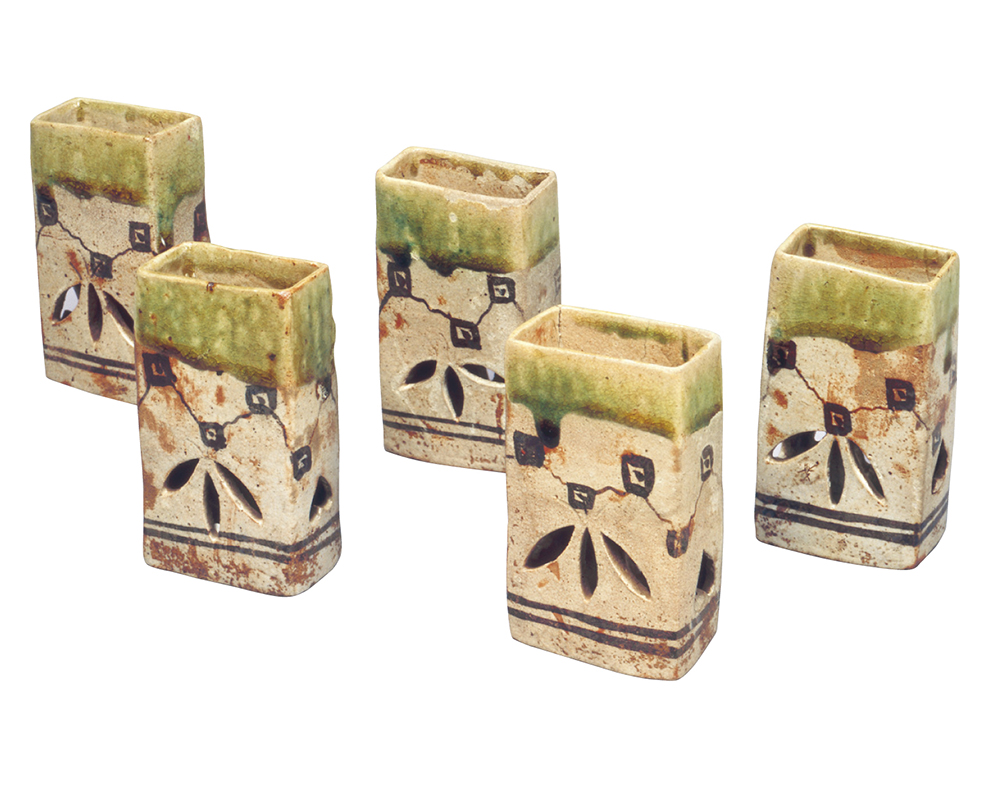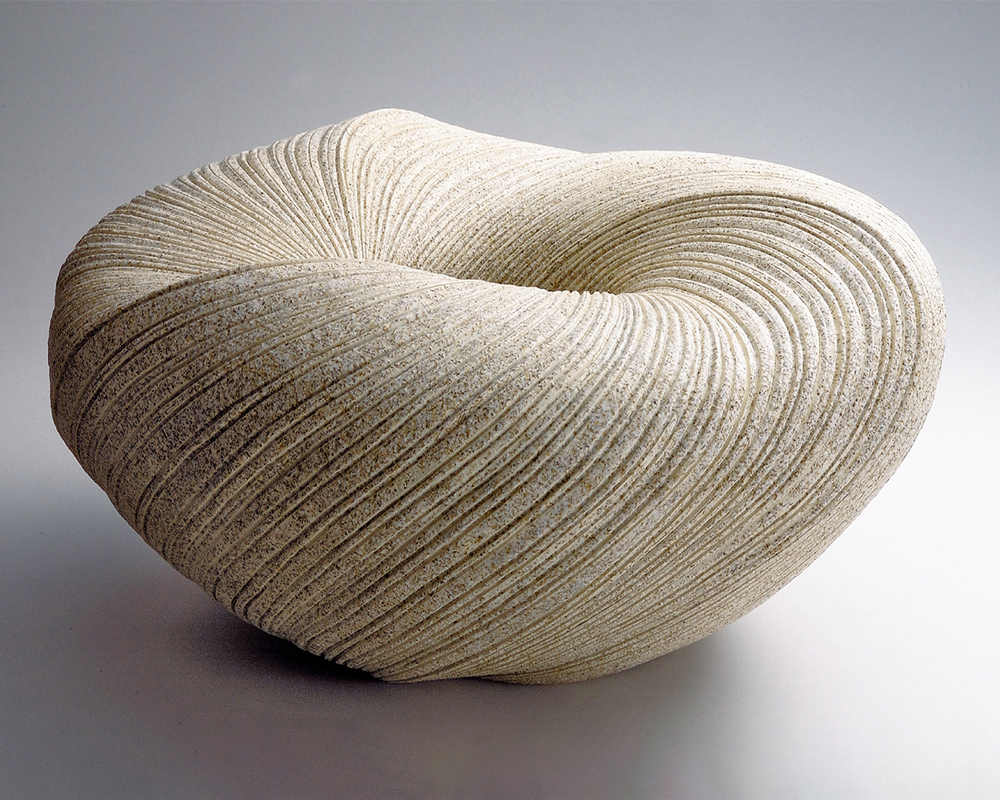Green glazed chicken/green glazed duck
(Powerful/Powerful)
Country
China
Era
Later Han period (1st-3rd century)
Traits
Pottery
Number of members
2 mouths
Law
Chicken/Width 19.8 cm Height 19.0 cm
Duck/Width 22.3 cm Height 16.1 cm
Commentary
During the Later Han Dynasty, many green-glazed Ming vessels (burial goods) were made. It was customary to bury them fashioned from familiar objects from daily life, and horses, dogs, cows, and chickens were the motifs used as important livestock, and many of these were well-made. The chicken and duck shown here are evenly coated with green glaze and are moderately silvered overall. They may not be a pair, but they are fine pieces of similar style.
Three-color dragon ear bottle
(Third-generation dragon)
Country
China
Era
Tang Dynasty (8th century)
Traits
Pottery
Number of members
1 share
Law
height 35.2 cm
Commentary
It resembles a Greek amphora, a jar with a handle. Originally made of metal or glass, imitations were made in China from around the 7th century using ceramics. This jar also has Chinese characteristics, such as the dragon-shaped ears. It is made from fine clay and coated with three types of glaze - green, brown, and white - before being fired at low heat. The glaze melts, flows, and subtly mixes with the colors, making it a sight to behold. It was not made as a practical item, but as a burial accessory for royalty and others.
White glaze waterfowl pattern pillow
(Hakuyuu Suikinmon Pillow)
Country
China
Era
Northern Song Dynasty (11th century)
Traits
Pottery
Number of members
1 share
Law
Diameter 19.9 cm Height 8.9 cm
Commentary
White clay is applied to a gray base and finished with a transparent glaze, which is called white glaze. Many were made in or around the Cizhou kiln in Hebei Province, China. This is a ceramic pillow that was popular during the Song Dynasty, and on the top surface is a scratched-off painting of a duck leisurely walking through a lotus pond. The back of the bird is covered with fine round patterns (pearl patterns), which may be an imitation of the metalwork technique of fish roe.
Celadon bowl with lotus petal design
(Ethics Committee Members' Meeting)
Country
Korea
Era
Goryeo period (12th century)
Traits
Pottery
Number of members
1 share
Law
Diameter 17.5 cm
Commentary
This bowl has a gentle, rounded shape. It has a small, low base, no pattern inside, and a double lotus motif carved in three layers on the outside of the body. The pale green, transparent celadon glaze is applied evenly up to the base, making it a flawless masterpiece from the mature period of Goryeo celadon.
scraped flat pot
(Kakiotoshihenko)
Country
Korea
Era
Li Dynasty (15th century)
Traits
Pottery
Number of members
1 share
Law
height 24.0 cm
Commentary
The iron-rich base is covered with white clay, and patterns are created using techniques such as scraping, after which a transparent glaze is applied and the pot is fired. This technique is called Buncheong ware, and was produced in abundance from the 15th to 16th centuries. Flat jars are containers for carrying water, and flat jars with a variety of decorations were produced during the Joseon Dynasty. These jars have free-flowing depictions of lush tree leaves across the flat surface, and the sides and shoulders are divided and painted with geometric patterns. Although the style is simple, it also has a sophisticated feel due to the skill of the craftsman.
Large jar with blue and white peony arabesque design
(From the Sometsuke peony to the grass montaiko)
Country
Vietnam
Era
Lei Dynasty (15th century)
Traits
Pottery
Number of members
1 share
Law
height 39.5 cm
Commentary
This blue and white porcelain vase was made in the Annam region, now Vietnam. It imitates Chinese blue and white porcelain, but the inside of the rim is not glazed and it is unusual in that it has four small lugs on the shoulder. The blue and white porcelain has good coloring and is a large, excellent piece.
Black Oribe misaligned tea bowl
(Black orb is the same)
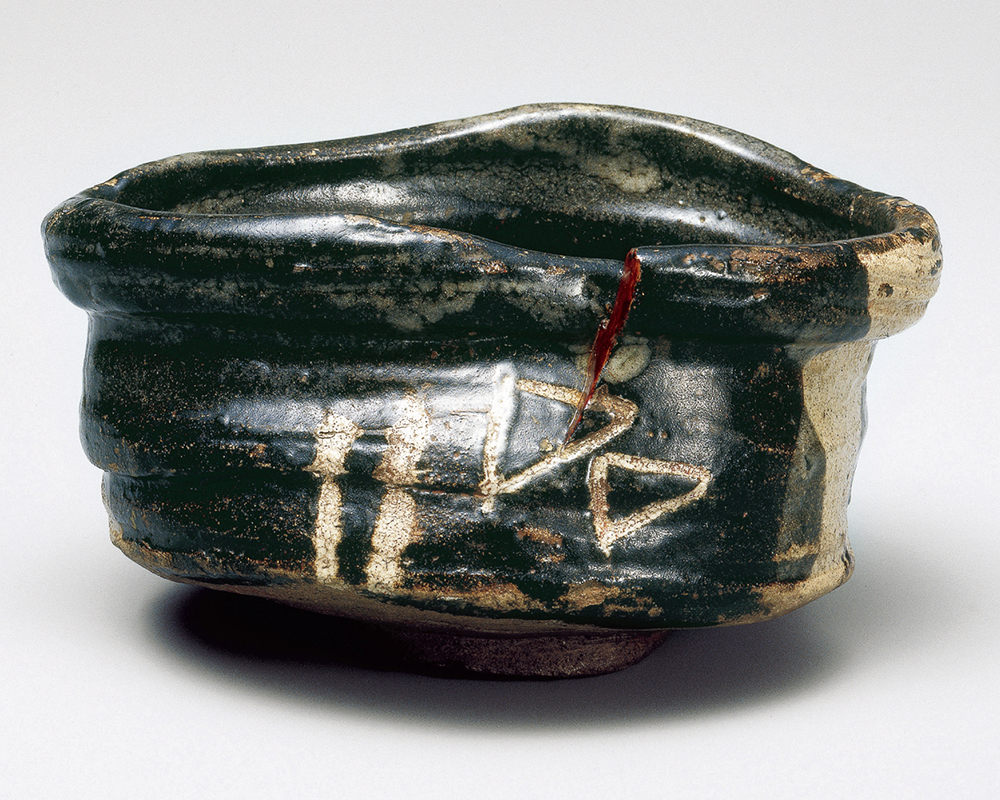
Country
Japan
Era
Momoyama period (17th century)
Traits
Pottery
Number of members
1 share
Law
Diameter 15.1 × 10.9 cm Height 8.0 cm
Commentary
Oribe ware is representative of the extraordinary Momoyama period. The Mino region, where it is produced, was the only place in Japan that produced colorful pottery in the early modern period, and it dominated major consumption areas such as Kyoto.
At the time, most Mino ware was used for the tea ceremony. Oribe ware in particular is said to strongly reflect the tastes of the military commander Furuta Oribe, who was also a tea master, and is characterized by its innovative and unusual designs. This tea bowl is severely distorted and has a crack in part of the rim. The sides are boldly coated with black glaze, which has been scraped off to create a pattern. Looking at the base, a round, string-like layer of clay has been added to an area scraped off with a spatula to create a raised base. This roughness is a characteristic of Oribe ware tea bowls. Kuro Oribe in particular uses a glaze called "oniita" that contains a lot of iron, and is rapidly cooled after firing to produce a jet black color. Tea bowls with distorted shapes were called "hyogemono" at the time, and symbolize the Momoyama aesthetic sense that deviated from standard shapes such as perfect circles and squares.
Oribe square bowl with wheelbarrow design
(Folding car rally)
Country
Japan
Era
Early Edo period (17th century)
Traits
Pottery
Number of members
1 share
Law
Diameter 20.2 cm Height 4.3 cm
Commentary
This square bowl has a thick copper-green glaze applied diagonally, and between the glaze is a free-spirited brushwork of a one-wheeled cart and a pattern reminiscent of the dyed and woven Hikida-shibori technique. At the time, wholesalers in Kyoto handled a variety of genres, including lacquerware, dyed and woven goods, and pottery, and placed orders for products with a common design for each genre.
Oribe Sasato with four-way tube orientation
(Oribe Sasa Suka Shiho Tsumu Kouzuki)
Country
Japan
Era
Early Edo period (17th century)
Traits
Pottery
Number of members
5 mouths
Law
Each / Diameter 5.9 × 3.2cm Height 11.0cm
Commentary
At kaiseki dinners, mukouzuke is served on a tray along with lacquered rice and soup bowls. It is used to serve fish and other dishes, but there are few restrictions on its shape other than that it is a "container for food," and many of them have free and innovative designs. Oribe ware mukouzuke in particular have fun shapes and are brightly colored with green, iron, and feldspar glazes, and a wide variety of vessels have been handed down. This cylindrical mukouzuke has a bottom attached to the middle of its long and slender body, and a bamboo leaf shape is carved into the lower part. The clay is very thin, and the edges of the carved pattern and the rim are carefully polished, highlighting the lightness that comes from delicate work.
Flat pot “Chota”
(Henko "chotou")
author
Takayuki Sakiyama
Years of birth and death
Born in 1958
Country
Japan
Era
2007
Traits
Pottery
Number of members
1 share
Law
Height 28.5 cm Width 51.5 cm
Commentary
This flower vase has a curious shape that evokes rolling waves and white sandy beaches. The creator, Sakiyama Takayuki, was born in Shimoda, Izu. He currently keeps his kiln in Koganezaki, Nishiizu, and continues to create works that are imbued with his feelings for the sea. The material is Shigaraki clay, and the pieces are made by standing the boards upright without using a potter's wheel, then combining two or three of them to create the shape. The body is hollow, so it is not as heavy as it looks, which is reminiscent of the smooth white sand and its lightness as it floats in the wind. All of the lines on the surface are carved by hand, making this a new form of pottery that aims to combine ceramics and sculpture.
